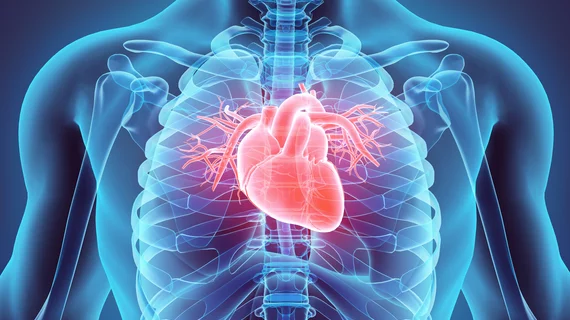Just 10% of HFrEF patients eligible for an ICD have one
Researchers are calling for better implementation of implantable cardioverter-defibrillator (ICD) therapy after an analysis of the Swedish HF Registry (SwedeHF) found the devices to be beneficial—but underused—among patients with heart failure with reduced ejection fraction (HFrEF).
American and European guidelines both recommend ICDs for the primary prevention of sudden cardiac death in certain patients with HFrEF, first author Benedikt Schrage, MD, and colleagues wrote in Circulation—namely those with non-ischemic dilated cardiomyopathy or ischemic heart disease after an MI. But while those recommendations are rooted in solid evidence, the evidence was collected some 20 years ago and might not reflect how physicians approach a HFrEF diagnosis today.
Schrage, of the Karolinska Institutet in Stockholm and University Heart Centre Hamburg in Germany, and colleagues analyzed patients from the SwedeHF registry, including people who met European Society of Cardiology criteria for primary prevention with an ICD. Of 16,702 eligible patients in the registry, just 1,599—one-tenth—actually had an implantable device.
Schrage et al. matched 1,305 ICD recipients with 1,305 non-recipients, following up with patients through five years. The authors found that ICD use was associated with a 27% reduction in the risk of all-cause mortality within one year of implantation and a 12% reduced risk of all-cause mortality within five years. Results were consistent across subgroups, including patients with versus without ischemic heart disease, males versus females, older versus younger patients and those with or without a history of cardiac resynchronization therapy.
Earlier versus later enrollment in the SwedeHF registry didn’t seem to make a difference in ICD outcomes, either, Schrage and colleagues said.
“Our analysis confirms the findings from randomized controlled trials (RCTs) on primary prevention ICD in a real-world HFrEF population receiving contemporary care,” the authors wrote. “Consistently with previous registry analyses, mortality rates were higher than in RCTs. This finding may reflect the greater burden of comorbidities and more severe HF in our and other registry cohorts vs. trial populations.”
The team noted their study is one that highlights the underuse of ICD therapy in Sweden—something that’s been looked at before. They said poor ICD usage might be attributed to the fact that most HF patients in Sweden are seen by primary care physicians, who might lack the knowledge and acceptance of ICDs while focusing on their contraindications.
“Our data emphasize the need of ICD use implementation,” Schrage et al. wrote. “Quality control measures in registries and screening initiatives may significantly contribute to device therapy implementation.”

